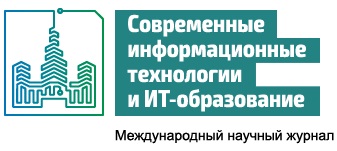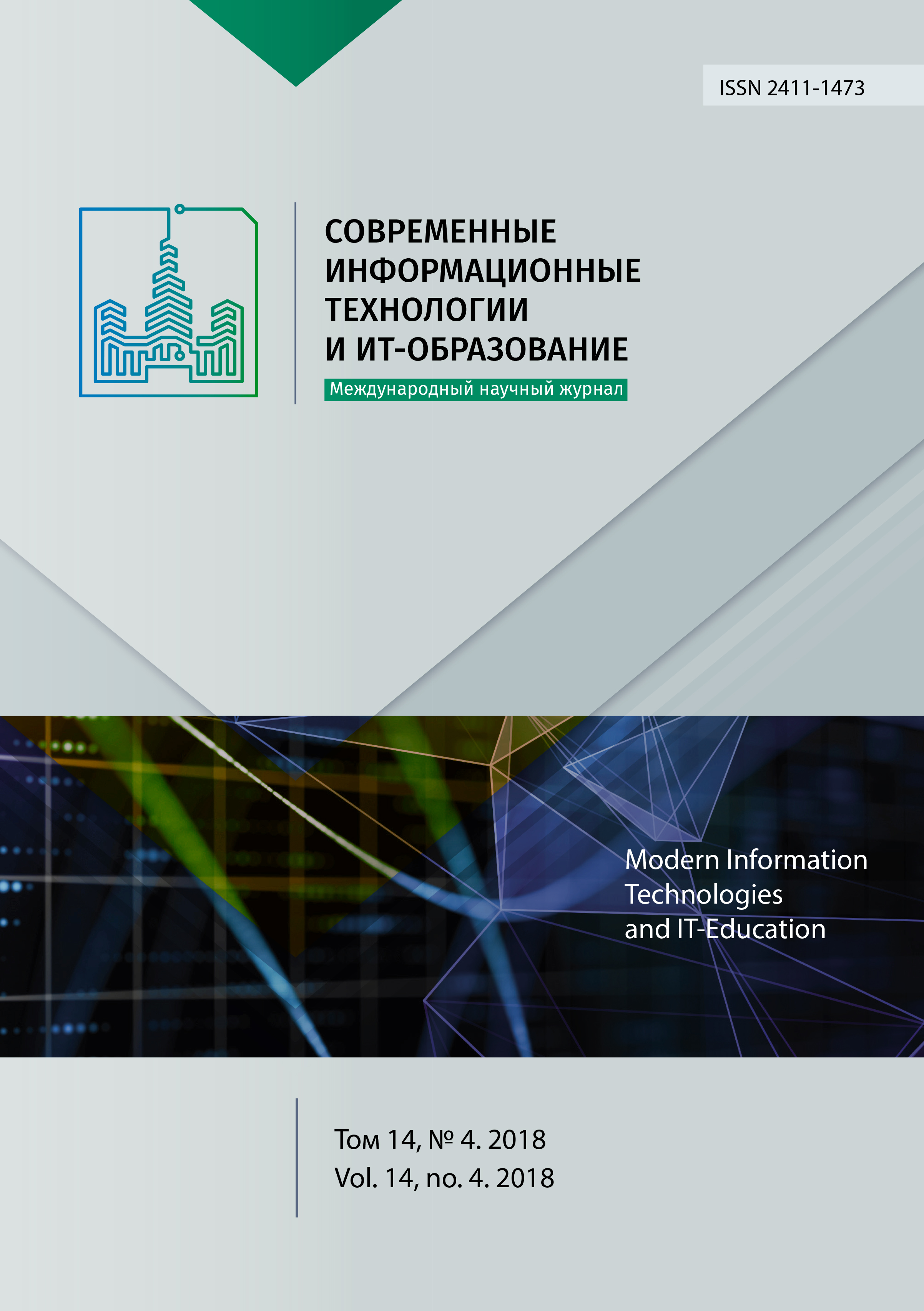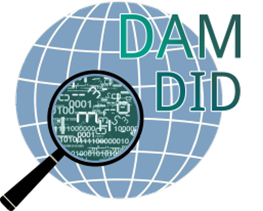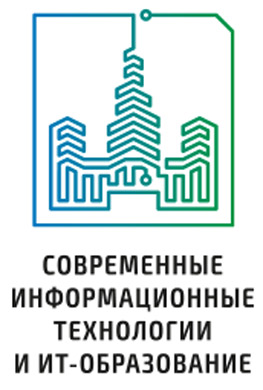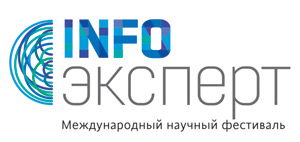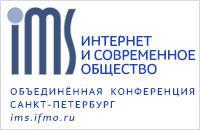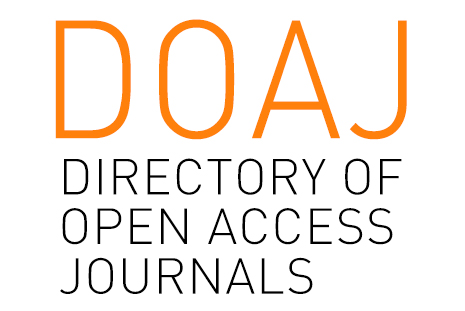О ПЕРСПЕКТИВАХ ИСПОЛЬЗОВАНИЯ ТЕХНОЛОГИЙ ГЕЙМИФИКАЦИИ ПРИ РАННЕМ ОБУЧЕНИИ ОБЪЕКТНО-ОРИЕНТИРОВАННОМУ ПРОГРАММИРОВАНИЮ
Аннотация
В статье рассматриваются подходы к реализации содержательной линии «программирование» школьного курса информатики. Авторами анализируется динамика школьного курса в целом, а также существующие подходы к освоению основ программирования в России и западных странах. На основании ряда современных исследований, выдвигаются предположения о перспективности использования технологии геймификации, а также о необходимости реализации курса объектно-ориентированного программирования. Анализируя зарубежный опыт, авторы выделяют три популярные платформы – Alice, GreenFoot и Scratch и делают выбор в пользу использования среды GreenFoot которая позволяет сочетать обучение объектно-ориентированному программированию, используя синтаксис Java, и технологию геймификации. Кроме того, обеспечивает упрощённый переход к ООП для детей, имеющих опыт работы в среде Scratch в начальной школе.
Кроме того, авторами статьи описан эксперимент, который должен был выявить допустимость использования среды GreenFoot в шестом классе основной школы, учитывая, что согласно интервью разработчиков, апробация в начальной школе дала низкие результаты, а в возрасте 14 лет и старше – высокие. Таким образом одной из целей эксперимента стало определение «границы вхождения» обучающихся в курс освоения объектно-ориентированного программирования с использованием среды GreenFoot.
В статье описаны результаты локализации и подготовки тестовой учебной программы, а также организационные особенности эксперимента. Кроме того, описаны результаты входящего мониторинга, выявившего уровень заинтересованности и начальной подготовки участников фокус-группы. Приведены и проанализированы результаты эксперимента, в частности сделаны выводы о перспективности технологии геймификации и применимости среды GreenFootна уровне 6 класса. Также определены пути дальнейших исследований.
Литература
[2] Bosova L.L. Informatics Science at School: Yesterday, Today and Future. Pedagogical Informatic. 2016; 1:3-12. Available at: https://elibrary.ru/item.asp?id=25900346 (accessed 10.06.2018). (In Russian)
[3] Bosova L.L., Sorokina T.E. Methodics of using interactive environments in training younger schoolchildren in programming. Informatics and Education. 2014; 7:61-68. Available at: https://elibrary.ru/item.asp?id=22589444 (accessed 10.06.2018). (In Russian)
[4] Varenina L.P. Gamification in Education. Historical and social-educational ideas. 2014; 6(6-2):314-317. Available at: https://elibrary.ru/item.asp?id=22981456 (accessed 10.06.2018). (In Russian)
[5] Govorov А.I., Govorova M.M. Gamification as a mean of improving students’ motivation. Informatics and Education. 2014; 9:76-78. Available at: https://elibrary.ru/item.asp?id=22651664 (accessed 10.06.2018). (In Russian)
[6] Grinshkun V.V., Levchenko I.V. From Computer Science to Basic Computer Science. Vestnik Moscow City University. Series «Informatics and Informatization of Education». 2008; 15:40-46. Available at: https://elibrary.ru/item.asp?id=12111349 (accessed 10.06.2018). (In Russian)
[7] Ershov A.P. Programming, the Second Literacy. Microprocessing and Microprogramming: Proc. of the Third World Conference on Computer Education (Lausanne, Switzerland, 27–31 July 1981). 1981; 8(1):1-9. DOI: 10.1016/0165-6074(81)90002-8
[8] Zhdanov S.A., Demina O.V. Generic programming as a way of intensification the process of the implementation of algorithms training. problems of modern education. 2016; 2:154-157. Available at: https://elibrary.ru/item.asp?id=25919233 (accessed 10.06.2018). (In Russian)
[9] Zakharova T.B. Basic requirements for a school textbook on computer science. Informatics and Education. 2009; 10:32-40. Available at: https://elibrary.ru/item.asp?id=17771490 (accessed 10.06.2018). (In Russian)
[10] Zakharova T.B., Efimov P.I. Control of input data as a part of forming the culture of programming in the study of the theme “Algorithmization”. Informatics and Education. 2018; 1:49-52. Available at: https://elibrary.ru/item.asp?id=32555539 (accessed 10.06.2018). (In Russian)
[11] Kozlov O.A., Barysheva I.V. Formirovanie strukturnogo myshleniya shkol'nikov v processe obucheniya programmirovaniyu v ramkah shkol'nogo kursa informatiki. Hroniki Ob"edinyonnogo fonda ehlektronnyh resursov «Nauka i obrazovanie». 2017; 2:6. Available at: https://elibrary.ru/item.asp?id=28869838 (accessed 10.06.2018). (In Russian)
[12] Kozlov S.V. The analysis of results of experimental activity on studying of bases of object-oriented programming in a school course of informatics. Modern scientific researches and innovations. 2014; 6-3:16. Available at: https://elibrary.ru/item.asp?id=21709468 (accessed 10.06.2018). (In Russian)
[13] Kuznetsov A.A., Beshenkov S.A., Rakitina E. A. Modern Course of Computer Science: from Elements to System. Informatics and Education. 2004; 2:2-6. (In Russian)
[14] Kuznetsov A.A. et al. The maintenance of education to computer science at the basic school: on the way to fundamentalization. RUDN Journal of Informatization in Education. 2010; 4:5-17. Available at: https://elibrary.ru/item.asp?id=15249109 (accessed 10.06.2018). (In Russian)
[15] Kuznetsov A.A. The possibilities of dynamic computer games for training programming. Vestnik sovremennyh issledovanij. 2017; 11-1:90-92. Available at: https://elibrary.ru/item.asp?id=32276954 (accessed 10.06.2018). (In Russian)
[16] Monahova G.A., Monahov D.N. Gamification of the Educational Process in Secondary School. Distancionnoe i virtual'noe obuchenie. 2015; 12:95-103. Available at: https://elibrary.ru/item.asp?id=24881401 (accessed 10.06.2018). (In Russian)
[17] Murtuzaliyevа A.Z., Hajiyev T.C. About the importance of the study of algorithms and programming in the school course of informatics. Bulletin of the Socio-pedagogical institute. 2015; 2:54-57. Available at: https://elibrary.ru/item.asp?id=26629632 (accessed 10.06.2018). (In Russian)
[18] Mukhametzyanov R.R. Training in object oriented programming. Informatics and Education. 2017; 7:35-39. Available at: https://elibrary.ru/item.asp?id=30504077 (accessed 10.06.2018). (In Russian)
[19] Pavlov D.I. New edition of Federal State Standard of the Primary General Education – the place of informatics at elementary school. Pedagogical Informatic. 2017; 3:22-33. Available at: https://elibrary.ru/item.asp?id=30108315 (accessed 10.06.2018). (In Russian)
[20] Pavlov D.I. Disclosure of content lines of “Presentation of Information” and “Information Processes” at the level of primary education. Open and distance education. 2018; 1:56-68. (In Russian) DOI: 10.17223/16095944/69/8
[21] Pervin Yu.A. Early Learning Computer Science: Strategies, Stereotypes, Fate. Yu.A. Alyaev, I.G. Semakin (Eds.) Computer Science at School: Past, Present and Future. Perm: PSU, 2014, pp. 12-17. Available at: https://elibrary.ru/item.asp?id=21580824 (accessed 10.06.2018). (In Russian)
[22] Rakitina E.A. Programming Training: Modeling and Formalization. Informatics and Education. 2001; 1:17-27. (In Russian)
[23] Rozhkov I.V. Fedoseeva A.P. Features of teaching programming in JavaScript language for high school students with in-depth study of computer science. Science and Education: Problems and Prospects - 2017. SPb.: Amfora, 2017, pp. 173-175. Available at: https://elibrary.ru/item.asp?id=30069003 (accessed 10.06.2018). (In Russian)
[24] Samylkina N.N. Methods of teaching the content line "Modeling and Formalization". Informatics and Education. 2003; 2:25-31. (In Russian)
[25] Frolova M.A. Some aspects of learning the basics object-oriented programming in the primary school. Scientific discussion of modern youth: current issues, achievements and innovations. Penza: «Nauka i Prosveshchenie», 2016, pp. 99-101. Available at: https://elibrary.ru/item.asp?id=26838408 (accessed 10.06.2018). (In Russian)
[26] Elkonin D.B. Izbrannye psihologicheskie trudy [Selected psychological works]. M.: Pedagogika, 1989. 560 p. (In Russian)
[27] Bogost I. Gamification is bullshit. S.P. Walz (Ed.) The Gameful World: Approaches, Issues, Applications. The MIT Press, 2015, pр. 65.
[28] Jenkins H., Klopfer E., Squire K., Tan P. Entering the Education Arcade. Computers in Entertainment (CIE) - Theoretical and Practical Computer Applications in Entertainment. 2003; 1(1):8. DOI: 10.1145/950566.950591
[29] Fincher S., Cooper S., Kölling M., Maloney J. Comparing alice, greenfoot & scratch. Proceedings of the 41st ACM technical symposium on Computer science education (SIGCSE '10). ACM, New York, NY, USA, 2010, pp. 192-193. DOI: 10.1145/1734263.1734327
[30] Linehan C., Kirman B., Roche B. Gamification as behavioral psychology. S.P. Walz, S. Deterding (Eds.) The Gameful World: Approaches, Issues, Applications. Cambridge, MA, USA: MIT Press, 2015, pp. 81-105.
[31] Kiryakova G., Angelova N., Yordanova L. Gamification in education. Proceedings of 9th International Balkan Education and Science Conference. 2014. 5 p.
[32] Cooper S., Dann W., Pausch R. Alice: a 3-D tool for introductory programming concepts. Journal of Computing Sciences in Colleges. 2000; 15(5):107-116.
[33] Sattar A., Lorenzen T. Teach Alice programming to non-majors. ACM SIGCSE Bulletin. 2009; 41(2):118-121. DOI: 10.1145/1595453.1595488
[34] Kölling M. The Greenfoot Programming Environment. ACM Transactions on Computing Education (TOCE). 2010; 10(4):14. DOI: 10.1145/1868358.1868361
[35] Maloney J., Resnick M., Rusk N., Silverman B., Eastmond E. The Scratch Programming Language and Environment. ACM Transactions on Computing Education (TOCE). 2010; 10(4):16. DOI: 10.1145/1868358.1868363
[36] Kolling M. Introduction to Programming with Greenfoot: Object-Oriented Programming in Java with Games and Simulations. Pearson, 2009. 216 p.
[37] Resnick M., Maloney J., Monroy-Hernández A., Rusk N., Eastmond E., Brennan K., Millner A., Rosenbaum E., Silver J., Silverman B., Kafai Ya. Scratch: Programming For All. Communications of the ACM. 2009; 52(11):60-67. DOI: 10.1145/1592761.1592779
[38] Ouahbi I., Kaddari F., Darhmaoui H., Elachqar A., Lahmine S. Learning Basic Programming Concepts by Creating Games with Scratch Programming Environment. Procedia - Social and Behavioral Sciences. 2015; 191:1479-1482. DOI: 10.1016/j.sbspro.2015.04.224

Это произведение доступно по лицензии Creative Commons «Attribution» («Атрибуция») 4.0 Всемирная.
Редакционная политика журнала основывается на традиционных этических принципах российской научной периодики и строится с учетом этических норм работы редакторов и издателей, закрепленных в Кодексе поведения и руководящих принципах наилучшей практики для редактора журнала (Code of Conduct and Best Practice Guidelines for Journal Editors) и Кодексе поведения для издателя журнала (Code of Conduct for Journal Publishers), разработанных Комитетом по публикационной этике - Committee on Publication Ethics (COPE). В процессе издательской деятельности редколлегия журнала руководствуется международными правилами охраны авторского права, нормами действующего законодательства РФ, международными издательскими стандартами и обязательной ссылке на первоисточник.
Журнал позволяет авторам сохранять авторское право без ограничений. Журнал позволяет авторам сохранить права на публикацию без ограничений.
Издательская политика в области авторского права и архивирования определяются «зеленым цветом» в базе данных SHERPA/RoMEO.
Все статьи распространяются на условиях лицензии Creative Commons «Attribution» («Атрибуция») 4.0 Всемирная, которая позволяет другим использовать, распространять, дополнять эту работу с обязательной ссылкой на оригинальную работу и публикацию в этом журналe.
